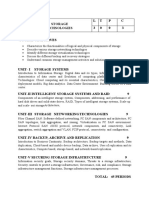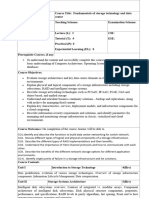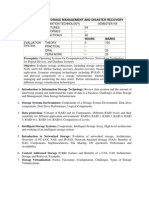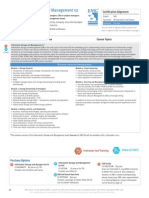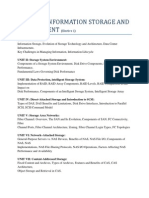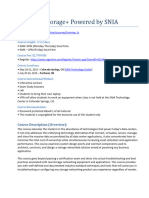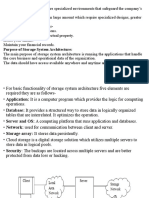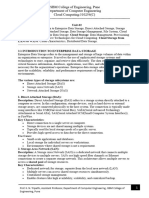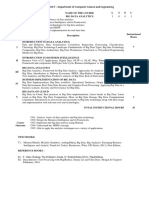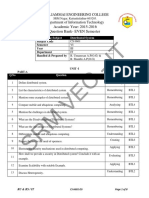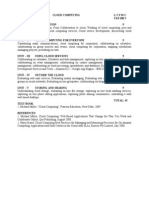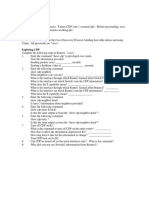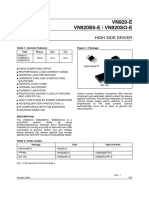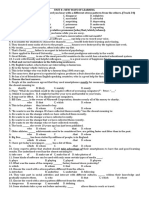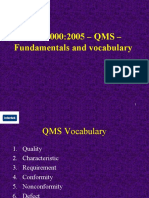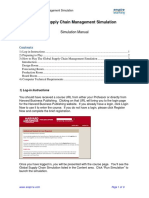0% found this document useful (0 votes)
152 views1 pageHICET - Department of Computer Science and Engineering
This document provides an overview of the Information Storage Management course. The course aims to help students understand storage systems, networking technologies, data center elements, cloud computing characteristics and benefits, and RAID. It is divided into 5 units that will cover storage systems, storage networking technologies and virtualization, backup and replication, cloud computing, and securing and managing storage infrastructure. The course outcomes are for students to explain physical and logical storage components, describe storage networking technologies, illustrate business continuity solutions, explain cloud computing characteristics, and implement secure storage infrastructure management.
Uploaded by
RevathimuthusamyCopyright
© © All Rights Reserved
We take content rights seriously. If you suspect this is your content, claim it here.
Available Formats
Download as PDF, TXT or read online on Scribd
0% found this document useful (0 votes)
152 views1 pageHICET - Department of Computer Science and Engineering
This document provides an overview of the Information Storage Management course. The course aims to help students understand storage systems, networking technologies, data center elements, cloud computing characteristics and benefits, and RAID. It is divided into 5 units that will cover storage systems, storage networking technologies and virtualization, backup and replication, cloud computing, and securing and managing storage infrastructure. The course outcomes are for students to explain physical and logical storage components, describe storage networking technologies, illustrate business continuity solutions, explain cloud computing characteristics, and implement secure storage infrastructure management.
Uploaded by
RevathimuthusamyCopyright
© © All Rights Reserved
We take content rights seriously. If you suspect this is your content, claim it here.
Available Formats
Download as PDF, TXT or read online on Scribd
/ 1







